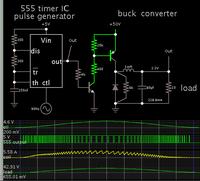fethiyeli
Full Member level 4
Hi, i am planning to make a adjustable voltage smps but there are a few questions i wanted to ask. SMPS has 0-50V and 0-5A output and i would like to use half bridge topology. PWM IC is UC3846. The first question is that how to find the proper output inductor value and according to textbook of "Switch-Mode Power Supplies Spice Simulations and Practical Designs" output inductor value becomes about 2mH for minimum output voltage which has been taken about 0.1V. I dont know whether this inductor value is ridiculous. Another question is feedback. Do i need to do feedback and other calculations according to minimum and maximum output voltages ? I am bit confused because output voltage is adjustable. How can i do the calculations and make the psu stable for all output voltages ? Thnx.
